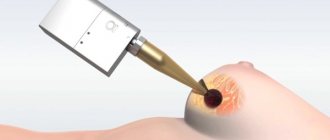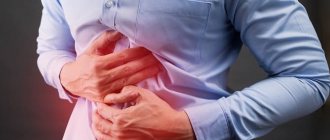General urine analysis
Expert opinion
Kovaleva Elena Anatolyevna
Doctor-Laboratory Assistant. 14 years of experience in clinical diagnostic services.
Ask a question to an expert
A general urine test (UU) is aimed at identifying indicators such as UBG (urobilinogen), KET (ketones), PRO (protein), NIT (nitrites), LEU (leukocytes), BLD (erythrocytes), GLU (glucose), SG( density or specific gravity), pH (reaction), BIL (bilirubin), squamous epithelium, casts, mucus, color.
Normally, bilirubin, ketones, red blood cells, protein, nitrites, white blood cells and glucose are not detected in the urine.
Decoding
Physical properties: color, density and transparency must meet the following parameters:
- Color – from light yellow to yellow;
- Density – 1.008 – 1.030 g/l;
- Transparency – transparent or slightly cloudy.
When studying chemical properties, the following are considered normal indicators:
- pH (medium) – acidic (from 5 to 7);
- Protein is contained in small quantities and cannot be determined chemically;
- Urobilin – less than 17 mol/l.
All other indicators must be equal to zero .
General table of indicators
| Index | Norm | Reasons for the increased content | Reasons for low content or absence |
| Total Density SG | 1.008 – 1.030 g/l | More than 1.030 g/l – with insufficient fluid intake, impaired renal function, edema, acute glomerulonephritis, diabetes mellitus. | 1.010 – 1.011 – with impaired renal function; Less than 1.005 – diabetes insipidus; Less than 1.015 – with diets, large fluid intake, and reduction of edema. |
| Urobilinogen UBG | No more than 17 mol/l; In the old-style forms, the urobilin content is recorded, + - weakly positive, ++ - positive, +++ - strongly positive, which indicates the degree of urobilinuria | Functional liver disorders: hepatitis, intoxication (poisoning with alcohol, chemical compounds, sepsis); cirrhosis, liver failure. | ___ |
| Bilirubin BIL | Not determined | Hepatic and obstructive jaundice | ___ |
| Ketone bodies KET | Not defined | Diabetes types 1 and 2, a strong increase in ketones is observed in coma; Long-term diets, alcohol poisoning, postoperative period | ___ |
| Red blood cells BLD | Not detected | Pyelonephritis and glomerulonephritis in the process of exacerbation, prostatitis, trauma and inflammation in the kidneys and urinary tract, tuberculosis, heart attack, kidney cancer. | No more than 3 in the field of view, which can happen during physical stress |
| Protein PRO | Less than 0.002 g/l | Infections and foci of inflammation in the kidneys and urinary tract, kidney tuberculosis, amyloidosis, bleeding, hypertension, long-term anemia. | ___ |
| Nitrite NIT | Not defined | Infection of the urinary tract by pathogenic bacteria | ___ |
| Leukocytes LEU | Up to 3 for men and up to 5 for women | Kidney diseases in acute and latent phase: pyelonephritis, glomerulonephritis; urinary tract inflammation, amyloidosis and renal tuberculosis | ___ |
| Glucose GLU | Not detected | Kidney diabetes | ___ |
| pH reaction | 5 — 7 | Diabetes mellitus, prolonged fasting, kidney tuberculosis, functional kidney disorders | Cystitis, hematuria, after vomiting and gastric lavage, |
Indications for the purpose of the study
- inflammatory processes in the genitourinary system (glomerulonephritis, pyelonephritis, interstitial nephritis, cystitis, kidney stones);
- acute and chronic renal failure;
- some neoplasms (myeloma, melanoma, pituitary tumor);
- obstructive jaundice (cholelithiasis, acute cholangitis);
- diabetes mellitus and diabetes insipidus;
- acute pancreatitis.
Usually, a kidney ultrasound is also prescribed at the same time (see how to prepare for a kidney ultrasound, explanation).
Red blood cells BLD
The presence of a large number of red blood cells (blood) in the urine is indicated by a change in its color to red-brown - this condition is called gross hematuria . A small amount of red blood cells can only be determined in the laboratory.
Normally, red blood cells are not detected, perhaps isolated manifestations, no more than 3 in the field of view. The reasons for the content of red blood cells are: infectious and inflammatory diseases of the kidneys and urinary tract, malignant tumors and kidney injuries. Often, traces of blood in the urine of men indicate inflammation of the prostate in the acute stage.
Why does blood appear in urine?
Urinalysis is one of the most common in medicine. A person is faced with it from birth. Each of us underwent such diagnostics without exceptions and there are no contraindications for it.
It is prescribed for various diseases, for research and determination of their nature, as well as for preventive checks.
The fact is that by the composition of this liquid, it is possible to determine the effectiveness of treatment, assess the general condition of a person and promptly identify diseases of the genitourinary system.
Urine is collected in a separate and sterile container. After which it is examined in the laboratory.
But other indicators are written in the certificate in Latin letters and numbers, which is incomprehensible to most patients. For example, PH, UBG or NEG. And sometimes there is something to pay attention to.
- glomerulo- and pyelonephritis (acute and chronic);
- urolithiasis disease;
- acute cystitis;
- kidney infarction;
- kidney and bladder cancer;
- prostate adenoma;
- trauma to the genitourinary system;
- hemorrhagic diathesis;
- systemic lupus erythematosus;
- hemorrhagic fever (Ebola, Crimean, Congo);
- kidney amyloidosis;
- poisoning with benzene, aniline, snake venom;
- kidney tuberculosis;
- lipoid nephrosis.
More details in the article Causes of blood in urine
Urobilinogen UBG
Urobilinogen is contained in freshly released urine, and when it stands for a long time, it turns into urobilin, which is present in the body of a healthy person in small doses.
An increased content of urobilin is typical when the liver is damaged, when it loses the ability to excrete it with bile, as well as when the bile duct is blocked (for example, by a stone).
Diagnosis of urobilinuria in medical practice is important for identifying the causes of jaundice and determining liver damage.
What is hidden under the BLD designation?
In urinalysis, specialists use the Latin letters BLD or Russian letters KRV to denote red blood cells. Sometimes the designation BLO or ERY may appear. These are blood cells containing hemoglobin. Their main function is to distribute oxygen throughout the tissues of the body. At the same time, they take carbon dioxide and move it to the lungs, from where it is eliminated naturally.
Red blood cells are involved in protecting the body from foreign substances. On their surface they have receptors with which they manage to capture antigens. They subsequently transport these cells to the liver, where they are destroyed.
The presence of BLD in urine in small quantities is considered normal. This is based on the fact that red blood cells are able to penetrate the kidney membranes. However, their significant number in the sample under study indicates the development of serious pathology.
Standard values
Ideally, if you read a general urine test, it should show a complete absence of red blood cells in the sample being studied. In single quantities, these cells can appear after excessive physical exertion, drinking alcohol, or prolonged psychologically traumatic situations. In these cases, the composition of urine quickly normalizes after the negative impact is eliminated. The BLD content level will depend on the person’s age:
- In children in the first year of life, there should be no red blood cells in the urine at all.
- In the interval from 1 to 18 years, the detection of one or two cells is considered natural.
- After adulthood, the norm in urine is from 0 to 3 red blood cells.
In women, the finding of three BLDs is considered natural. For men, this may mean an early stage of the disease. The urine of representatives of the stronger sex may contain only single cells.
An increase in the number of red blood cells to 250 cells threatens a person’s life. In such a situation, the patient is urgently hospitalized.
Protein PRO
The urine of a healthy person contains less than 0.002 g/l of protein . The content of this element in an amount exceeding the norm is called proteinuria, which is classified into renal and urinary tract proteinuria.
To differentiate proteinuria, additional examination of urine sediment is necessary (according to Nechiporenko, Addis-Kakhovsky). Only with a cumulative analysis of all indicators (erythrocytes, casts, leukocytes) can the cause of the protein content be identified, these are: pathological conditions of the kidneys (pyelonephritis, glomerulonephritis, tuberculosis, amyloidosis and pathological conditions of other organs: anemia, hypertension, heart failure.
Protein can be detected in small quantities if the patient consumed protein foods or performed heavy physical exercise the day before the test. If traces of protein are detected in the urine, the patient is prescribed a repeat test.
Assessment of physical parameters
Color, transparency, smell of urine. In a healthy person it is yellow in color of varying intensity. Brown and even almost black urine occurs with hemolytic anemia, malignant tumors, severe alcohol and chemical poisoning. It becomes reddish in case of injury, acute inflammation, or renal infarction. Pinkish - if hemoglobin production is impaired. Colorless or pale yellow urine occurs in diabetics. Milky color indicates the presence of pus, fats, and phosphates in high concentrations.
However, urine may acquire pink, red or brown shades due to beets, carrots, iron supplements, and “5-NOK”. And the green or light brown color is due to bay leaves and rhubarb. But these are not pathological, but physiological indicators of color, that is, the norm.
Fresh urine from a healthy person is clear. Only over time does it become cloudy, as salts and other impurities dissolved in it begin to precipitate. This is also the norm. The higher the concentration of impurities, the cloudier the urine.
It always has a specific smell, not too strong. If the urine smells like ammonia, this usually indicates inflammatory processes in the kidneys or bladder. She usually gives apples to diabetics. The smell of urine becomes pungent when a person consumes foods or takes medications rich in aromatic substances. In this case, there is no pathology.
Acidity of urine. If the diet is varied and balanced, then the urine reaction is either neutral (7.0) or slightly acidic (less than 7.0). It acquires a pronounced acidic reaction during fever caused by high temperature, stones in the bladder, and kidney disease. A significant alkaline reaction appears with vomiting, diarrhea, acute inflammatory processes, urinary tract infections, and the breakdown of cancerous tumors.
Relative density. This important parameter - sg in Latin transcription - characterizes the concentration function of the kidneys. It is defined as the specific gravity of a liquid and is normally 1003-1028 units. Its fluctuations for physiological reasons are allowed within the range of 1001-1040 units. Men have a higher specific gravity of urine than women and children.
In pathologies, its stable deviations are observed. Thus, with severe edema, diarrhea, acute glomerulonephritis, and diabetes, hypersthenuria is observed when the specific gravity exceeds 1030 units.
An indicator of low relative density - 1007-10015 units - indicates hyposthenuria, which can be caused by fasting, diabetes insipidus, and nephritis. And if the specific gravity is below 1010 units, then there is isosthenuria, which is characteristic of very severe kidney damage, including neurosclerosis.
You can learn more about all the main urine indicators and their interpretation in this table.
Total Density SG
The SG in healthy people can range from 1.010 to 1.025 . Deviations from the norm in a single study cannot have a decisive clinical significance. Detailed tests are required aimed at daily determination of density and its fluctuations: Reiselman, Zimnitsky, dry eating, water tests.
An increased RPL of urine is observed in cases of dehydration, diabetes mellitus, and edema that occurs due to pathologies of the heart and kidneys.
Low OPl - with excessive drinking, decreased swelling, long-term fasting, kidney failure, diabetes insipidus.
When are Zimnitsky tests prescribed?
The Zimnitsky analysis is prescribed to study kidney functionality.
Expert opinion
Kovaleva Elena Anatolyevna
Doctor-Laboratory Assistant. 14 years of experience in clinical diagnostic services.
Ask a question to an expert
The diagnostic factors of this method are: the density of urine and changes in its numerical indicators in different portions, and diuresis - the ratio between the amount of fluid consumed and excreted in 24 hours.
Normal indicators:
- The difference in urine density between the highest and lowest values is not less than 0.012;
- Daytime diuresis is twice as prevalent as nighttime diuresis;
- The daily amount of urine is not less than 65% and not more than 85% of the fluid consumed;
- The allowed minimum density of urine is 1.005, the maximum is 1.030.
Deviations indicate kidney disease: pyelonephritis and glomerulonephritis .










